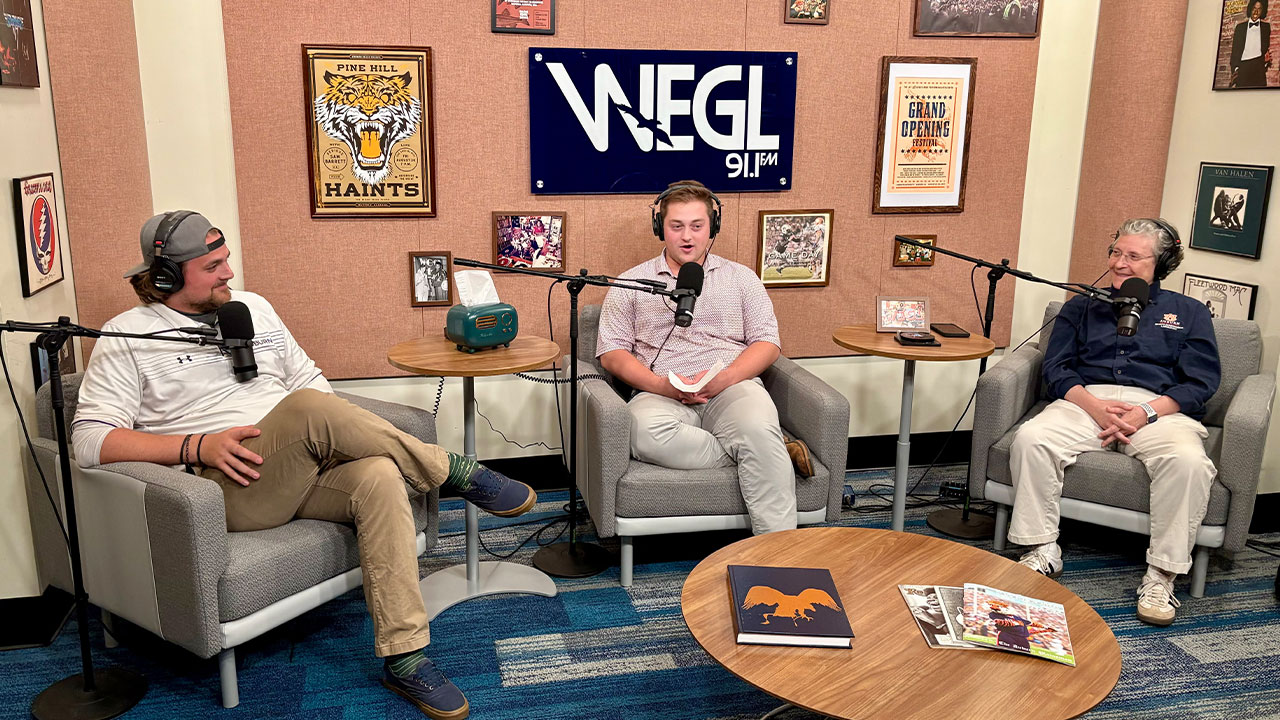content body
You’d be hard pressed to find a more passionate professor on Auburn’s campus than Wendi Weimar.
Weimar, a biomechanist by trade, has been the director of the Sport Biomechanics Laboratory for more than 25 years.
Located on the first floor of the Kinesiology Building, the lab’s researchers use cutting-edge analysis and technology for a wide range of applications in humans, as well as horses, dogs, eagles and other animals. The lab hosts sports camps and high school programs for the community, applying biomechanics research, which is the study of physical movement, to improve athlete performance and overall health.
Lab work
Over the years, Weimer and her staff have consulted with professional and college athletes, Olympians, Paralympians, veterinarians and members of the military. Weimar’s primary focus is on the lower extremity — everything from footwear choice and shoe tying to walking, running, hopping and jumping rope. She empowers her students to analyze movements of the body to help individuals improve their performance while also minimizing the risk of injury.
“We do motion and gait movement analysis to help people be better movers,” Weimer said. “In our research, we do studies that help people perform better, and hopefully by performing better, we put them in a better position to avoid injuries.”
A fascinating journey
Weimar’s journey to Auburn is as interesting as her research. Before obtaining her master’s in adapted physical education from the University of Virginia, the Vermont native got her undergraduate degree from Castleton State College, now part of Vermont State University.
“I had a double major, double minor,” Weimar said . “I was secondary education, physics and chemistry, and then I had a minor in math and a minor in theater. I went into theater because I thought that would help me be a better teacher.”
After a teaching stint at a high school near Albany, New York, Weimar began to consider getting a doctorate. It was her parents who urged her to visit the ‘Loveliest Village on the Plains.’
“It was 1996, and we drove up College Street and saw all the beautiful brick buildings: quaint, quaint, quaint. It reminded me of a New England town,” Weimar recalled . “Then, when I met the professors in the School of Kinesiology, it was like putting on a jacket that just fits the length of the sleeves.”
A Northerner in the South
As a doctoral student, the native New Englander learned to embrace the Auburn spirit that is not afraid. But it did take a little getting used to.
“The Auburn Family permeates outside of campus,” Weimar said. “When I went home on my first winter break, I had on an Auburn shirt, and somebody yelled ‘War Eagle’ at me. I dropped back ready for a fight.
“I was like, ‘You feeling froggy, Kermit? Just jump. Let's go.’”
After 25 years, Auburn is home, and Weimer is a proud alumna and faculty member who says ‘War Eagle’ everywhere she goes.
“I wasn't up on the lingo then, but I am now,” she said. “I've been all over the country, all over the world, and if I'm wearing Auburn gear, I hear it. It’s great.”
Research, teaching and more
In addition to being a professor, Weimar is a renowned author and scientist. The co-author of the widely used textbook “Kinesiology: Scientific Basis of Human Motion” has penned 46 peer-reviewed manuscripts, and she recently received a Career Achievement Award from the International American College of Sports Medicine.
Her study on flip flops, footwear choice and shoe tying led to an interview on “Good Morning America,” during which an estimated 600 million viewers tuned in.
Using her infamous phrases like ‘slice o’ pie’ and ‘wicked cool,’ Weimar’s teaching makes her classes a favorite among students. She applies her theater training to keep them engaged and learning.
“I like to create an environment where students feel comfortable and have access to opportunity,” Weimar said. “Being a theater minor, one of the biggest things I learned is that the play doesn't happen on the stage. If you’re on the stage, it’s your job to create the environment so it happens in the minds of the audience.”





